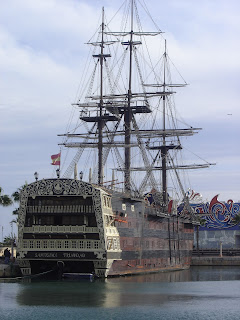Three Kings Day in Spain
Three Kings Day, or Día de los Reyes in Spanish, falls on January the 6th
every year. It's the day that most children in Spain and other
Spanish-speaking countries receive their Christmas presents.
In the days leading up to January the 5th,
children write letters to the Three Kings, Melchior, Gaspar, and
Balthasar. In
these letters, the children tell the kings how well they have behaved during
the year and ask for the gifts they would like to receive on January 6th. In theory, the better
the children behaved, the better their gifts will be. But all children know that if they misbehaved, they run the
risk of receiving a piece of coal instead. Although, in truth, it is a
"sweet" punishment because the coal is made of sugar.
The day before Three Kings Day is a day for parades
and processions throughout Spain.
The young and young-at-heart alike line the streets
of Madrid, Barcelona (where the kings arrive by boat), Alcoy (which hosts
Spain's longest-running parade, dating back to 1885) and more, all eager to get
a glimpse of the kings.
The tradition says that the three kings (also known as the
three wise men) had a mission to go to Bethlehem. They followed a star that
showed them the way to see baby Jesus, who had just been born. Upon arriving,
these three kings offered three gifts: gold, incense, and myrrh.
On the eve of January 5, children leave their shoes
by the door with hopes that the three kings will leave gifts inside during
their overnight visit. Since the three kings travel such a long distance and have a
lot of work to do during the 5th and 6th of January, families
traditionally leave water, turrón (a typical
Christmas nougat), and milk out for the three kings and their camels to eat and
drink.
Another essential part of Three Kings Day in Spain
is the Roscon de los Reyes,
or kings' cake. The ring-shaped pastry is decorated to look like a crown that a
king would wear. It is often topped with glazed fruits, representing the colourful
jewels on a crown. Buried inside it is a toy, often a figurine of baby Jesus or
a tiny king. The person who finds it in their piece is said to have good luck
for the year.



Comments
Post a Comment